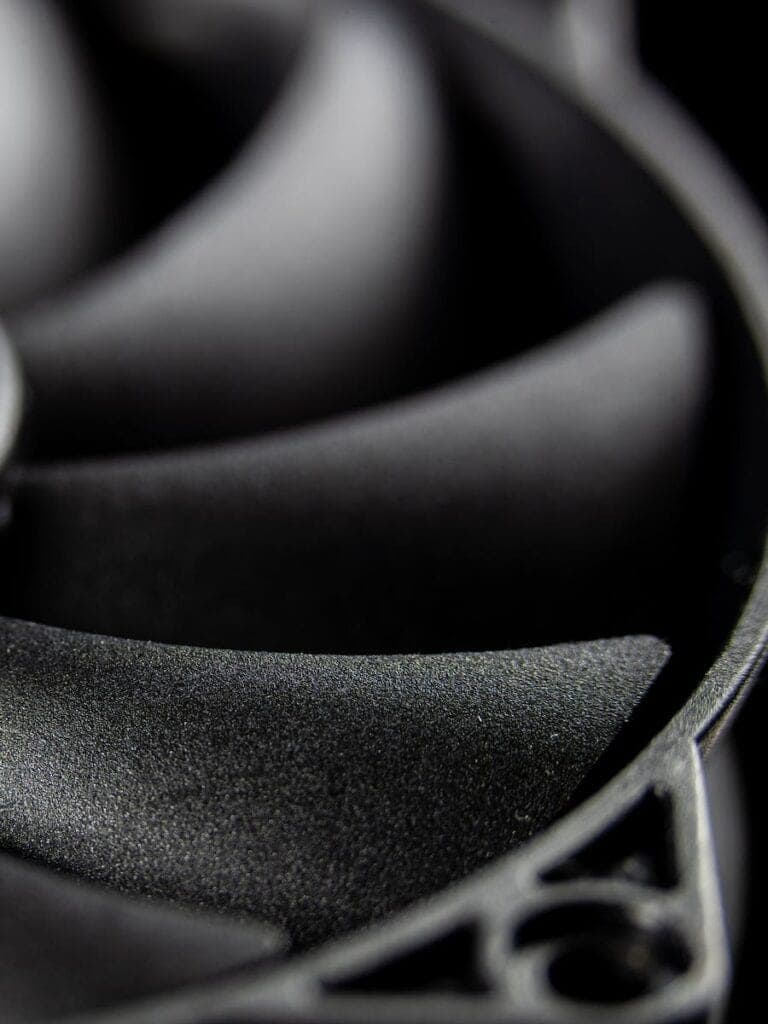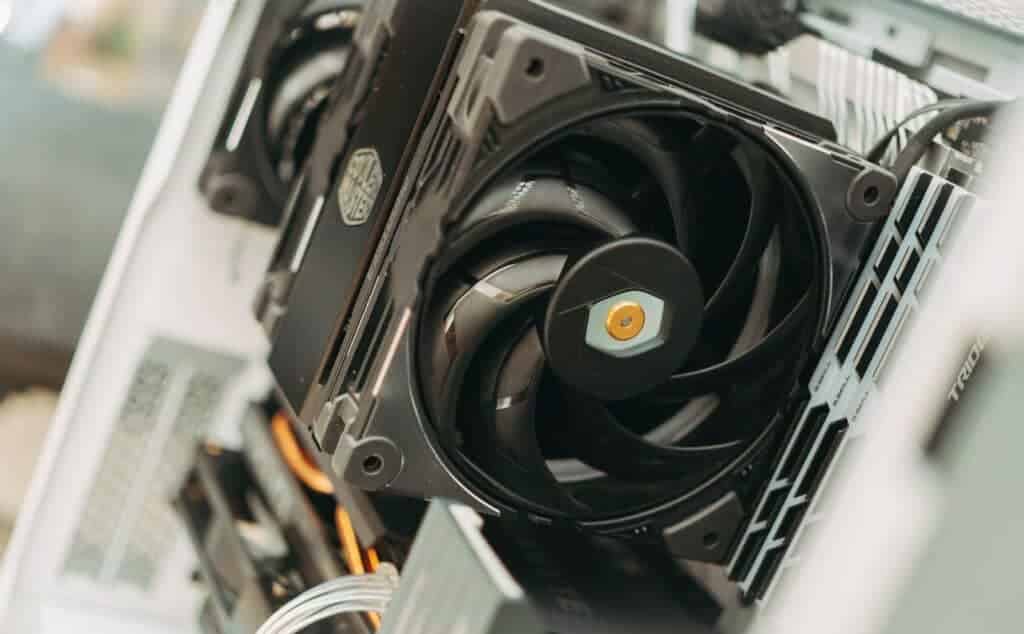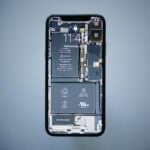Case fans are an important part of any computer system. They help keep the temperature inside your computer low. A low temperature protects your components and keeps things running smoothly. When a fan stops spinning, it can be a real problem. Here are some things you can do to troubleshoot and fix the problem.
Troubleshooting Your Computer’s Fans
When your case fans aren’t spinning, it’s a signal that something might be off with your PC’s cooling system. Let’s get straight to the heart of the matter and explore the common causes and solutions for this issue.
Basic Troubleshooting
Let’s start with some basic troubleshooting steps.
- Inspect the connections. Check to make sure the fans are plugged into the motherboard or power supply. Sometimes the cables can become loose. Be sure to check both ends of the connection.
- Test with another fan. Try plugging a different fan into the same connector. This will help you figure out if the connector is faulty, or if the fan itself is bad. This test helps isolate the problem.
- Check your BIOS settings. Most modern motherboards let you control fan speeds from the BIOS. Make sure the fans are enabled, and that they’re set to run at the correct speeds.

Cleaning and Maintenance
Over time, dust and debris can build up on your fans. This can make it hard for them to spin. Give your fans a good cleaning with compressed air. If your fans use oil-based bearings, adding a drop or two of lubricating oil can get them spinning freely again. Be careful not to get oil on the fan blades or motor housing.
Advanced Troubleshooting
If you’ve tried the above steps and your case fans still aren’t spinning, there may be a more serious problem. Here’s what to look at next:
Power Issues
- Faulty power supply. If your power supply is failing, it may not be able to provide enough power to spin your fans. This problem can be tough to diagnose. If you suspect your PSU is the problem, consider borrowing one from a friend or taking your computer to a shop.
Motherboard Issues
- Damaged fan headers. The fan headers on your motherboard can become damaged over time. If a fan header is damaged, it won’t be able to power your fans.
Fan Controller Issues
- Problems with the fan controller. If you’re using a fan controller, it may be malfunctioning. Check to make sure the controller is getting power and that all connections are secure.
Below is a summary of the possible issues that could cause fans to stop, and the steps you can take to fix them.
| Issue | Solution |
|---|---|
| Loose Connections | Check that all fans are plugged into power. |
| Faulty Fan | Replace the fan with a working one. |
| BIOS Settings | Adjust fan settings in the BIOS. |
| Dust and Debris | Clean fans with compressed air, or lubricate oil-based bearings. |
| Power Supply Issues | Test with a known working power supply. |
| Damaged Fan Header | You may need to replace your motherboard. |
| Faulty Fan Controller | Check the fan controller and its connections. |

Case Fans Not Spinning: Troubleshooting Guide
| Problem | Possible Causes | Solutions |
|---|---|---|
| No fans spinning at all | * Power supply not providing enough power * Faulty motherboard fan headers * Incorrect fan connections * Loose connections * BIOS settings disabled fans * Dust obstruction * Fan failure | * Check if all other PC components are receiving power * Test power supply with a multimeter * Reseat the motherboard fan headers * Ensure fan connectors are properly plugged in and aligned * Check for loose cables around fan headers and inside the case * Enable fan control in BIOS (consult motherboard manual) * Clean dust buildup from fans and heatsinks using compressed air * Replace faulty fans |
| Some fans spinning, others not | * Individual fan failure * Different fan profiles in BIOS * Faulty fan controller (if case has one) * Obstruction on individual fan blades | * Try connecting the non-spinning fan to a different header * Check BIOS for individual fan profiles and adjust settings if needed * If case has a fan controller, check for faulty wiring or settings * Ensure no wires or other objects are obstructing individual fan blades * Replace faulty fan |
| Fans spinning slowly | * Low voltage supply due to faulty power supply or weak cables * BIOS settings limiting fan speed * High system temperature triggering thermal throttling * Dust obstructing airflow | * Check if other components are also experiencing voltage issues * Inspect power supply for damage or replace outdated unit * Ensure sufficient cable gauge for power supply unit * Adjust fan speed profiles in BIOS * Clean dust buildup from fans, heatsinks, and case vents * Improve case airflow by adding or rearranging fans * Underclock components if necessary |
| Fans spinning inconsistently or making noise | * Defective fan bearing * Loose fan blades or mounting screws * Imbalanced fan blades * Damaged fan hub | * Replace noisy or erratic fan * Tighten loose fan blades and mounting screws * Check for damaged or bent fan blades * Replace fan if hub is damaged |
Additional Tips:
- Consult your motherboard and case manuals for specific instructions and troubleshooting advice.
- Use caution when opening your PC case and handling electrical components.
- Consider using software-based fan control tools for more flexible management.
- If troubleshooting fails, professional repair may be necessary.

Understanding the Basics of Case Fans
Before diving into troubleshooting, it’s essential to grasp the basics of case fans. These fans play a crucial role in maintaining optimal temperatures inside your PC by expelling hot air and drawing in cooler air. They are typically connected to the motherboard and can be controlled through the BIOS or dedicated software.
Common Causes for Case Fans Not Spinning
- Improper Connection: One of the most straightforward reasons your case fans might not be spinning is an incorrect or loose connection. Ensure that the fan’s power connector is properly seated in the motherboard or fan controller. Remember, different fans have different connectors (3-pin or 4-pin), so make sure they match the motherboard headers.
- BIOS Settings: Sometimes, the BIOS settings might be configured to keep the fans off until a certain temperature is reached. Check your BIOS fan control settings and adjust the fan curves if necessary.
- Power Supply Issues: If your power supply unit (PSU) is not providing adequate power or has malfunctioned, your fans might not spin. This is less common but worth checking, especially if you have other power-related issues.
- Faulty Fans: Fans can wear out or get damaged. If you suspect a fan is faulty, try connecting it to a different header on the motherboard or swap it with a known working fan.
- Software Conflicts: If you’re using software like iCUE or others for fan control, software glitches or conflicts can cause issues. Try uninstalling and reinstalling these programs.
Step-by-Step Troubleshooting Guide
- Check the Connections: Start by ensuring all fans are correctly connected to the motherboard or fan controller. Look for any loose or disconnected cables.
- Inspect the BIOS Settings: Reboot your computer and enter the BIOS. Look for fan control settings and ensure they are set correctly. You might want to set the fan speed to 100% temporarily to test if they spin up.
- Test with Another Header: If a fan isn’t spinning, try plugging it into a different fan header on the motherboard. If it spins up, the issue might be with the original header.
- Power Supply Check: If you have a modular PSU, ensure all cables are firmly connected. If you suspect a PSU issue, testing with another PSU can be helpful.
- Software Troubleshooting: Uninstall any fan control software and see if the fans start spinning. If they do, reinstall the software and check for updates.
- Fan Replacement: If a fan is still not spinning after trying the above steps, it might be time to replace it.
Enhancing Your PC’s Cooling Efficiency
Once your fans are spinning correctly, consider optimizing your PC’s cooling efficiency. This includes cleaning dust from fans and vents, ensuring proper airflow inside the case, and possibly adding more fans for better air circulation.







